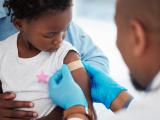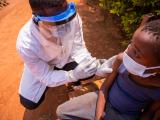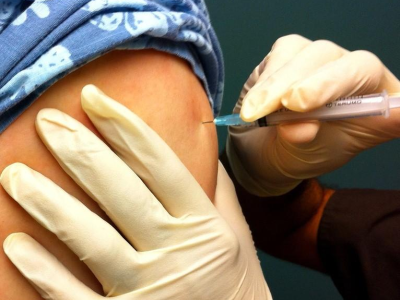Jul 27, 2004 (CIDRAP News) – Food irradiation advocates must step up to the chalkboard and start teaching the merits of the process before the market can achieve its sales potential, according to the results of a recent cattle industry association survey.
Results of a telephone survey early this year of 300 retail and food service beef purchasers showed about 4 in 10 people interviewed were not at all knowledgeable about irradiated ground beef. The process applies electromagnetic radiation to kill organisms that cause foodborne illness and to retard spoilage. Only 18% of knowledgeable current purchasers of irradiated ground beef thought a majority of their customers also understood the product.
The survey was not random: It drew on representative national sample lists and a list of companies known to carry irradiated ground beef. Responses were split based on a company's link to the product: current purchaser (user), past purchaser (nonuser), knowledgeable nonpurchaser, nonknowledgeable nonpurchaser.
Among the findings:
- Knowledge of and purchases of irradiated ground beef were low. Forty-one percent of those contacted knew virtually nothing about the product.
- Those who knew about the irradiated product had positive feelings about its role in the industry.
- The market for irradiated ground beef is growing. Almost half of past purchasers were very (14%) or somewhat (33%) likely to purchase the product in the next year. In addition, more than one quarter of knowledgeable nonusers were very (4%) or somewhat (23%) likely to do so. Fifty-eight percent of current purchasers said they would increase the amount of irradiated ground beef they would buy, versus 23% who were planning to decrease the amount.
- The most frequently reported concern by users was that consumers would not buy the treated ground beef (22%).
- Knowledgeable current users believed that the consumers most likely to buy irradiated ground beef are those with more education, those with higher incomes, seniors, and families with children.
- Forty-three percent of knowledgeable users considered consumers with money woes to be the least likely to buy irradiated beef.
- More than 80% of respondents said it was extremely or very important to conduct a consumer education campaign about irradiated beef if the beef industry wants to increase demand for the product.
"The knowledge of the technology is weaker than we thought," said Elizabeth Dressler, director of product enhancement research for the National Cattlemen's Beef Association (NCBA). The association contracts with the Cattlemen's Beef Board to conduct research funded by American beef producers.
"Awareness and usage might be lower than we thought," Dressler said. "It's backing up what a lot of studies have done on the consumer-perception side. Once a person is educated, they're much more willing to try this technology."
Ronald Eustice, with the Minnesota Beef Council (MBC) called the survey findings a roadmap for the NCBA.
It's clear that people in retail and food services need to understand irradiation, Eustice said. "I would encourage the NCBA to look closely at the results of this research and become proactive."
"Until someone decides they must educate consumers, irradiation will continue to be an underused tool that can eliminate much of the foodborne illness," he said.
Eustice cited a recently published survey comparing consumer attitudes toward irradiated foods in 2003 and 1993. The study was published in the June edition of Food Protection Trends. It showed the percentage of consumers willing to buy irradiated food had doubled over that decade but that much education is still needed. For example, the majority of consumers surveyed said irradiation was very necessary only for fruits and vegetables.
And most consumers felt they were uninformed about the advantages of irradiation, that study concluded.
"Educated consumers overwhelmingly support the technology and are ready to buy the product," Eustice said.
See also:
CIDRAP overview of irradiation
Amy Becker is a freelance reporter for CIDRAP. She will enter the University of Minnesota's graduate program in public health administration and policy in fall 2004.
















